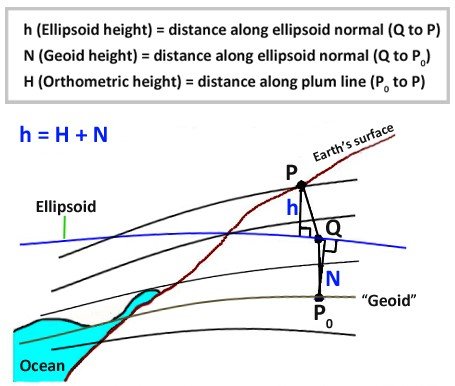Mean Sea Level is established by measuring the rise and fall of the tides. This is another ‘inexact’ science. The tides are affected by the juxtaposition of ‘celestial’ objects, most notably the moon but also the planets to varying degrees. A well-established MSL reference datum is one where tidal movement has been observed for over 18 years at what is called a ‘Primary port’. The majority of countries with a coastline today have established these primary ports along that coastline and the predicted level of tides is reported by the US National Oceanographic and Atmospheric Administration (NOAA) and the UK Hydrographic Office tide tables.
In order to tie MSL to both onshore elevations and offshore depths, these observations are tied to a physical benchmark usually in a nearby building wall or some other place unlikely to be inundated by the sea. This benchmark is quoted as a certain height above mean sea level. Sometimes MSL is used also as chart datum for the reduction of depth measurements to a common reference. Sometimes chart datum is established as the lowest level of low water, in order to provide mariners with the least possible depth at a point (i.e. the worst case). Onshore selected benchmarks represent an origin or starting point that can be used to provide the starting point for levelling across the whole country and continent.
The references for North America are the ‘Sea Level Datum of 1929’ – later renamed to the ‘National Geodetic Vertical Datum’ (NGVD 29) – and recently adjusted ‘North American Vertical Datum of 1988’ (NAVD 88).

Above shows the difference between heights (h) above the reference ellipsoid and the height above the geoid (H) also known as ‘orthometric’ height. The caution is that the GPS system provides ‘height’ above the ellipsoid, not MSL elevation. These heights have to be adjusted to make sure they match elevations from other datasets


Post your comment on this topic.